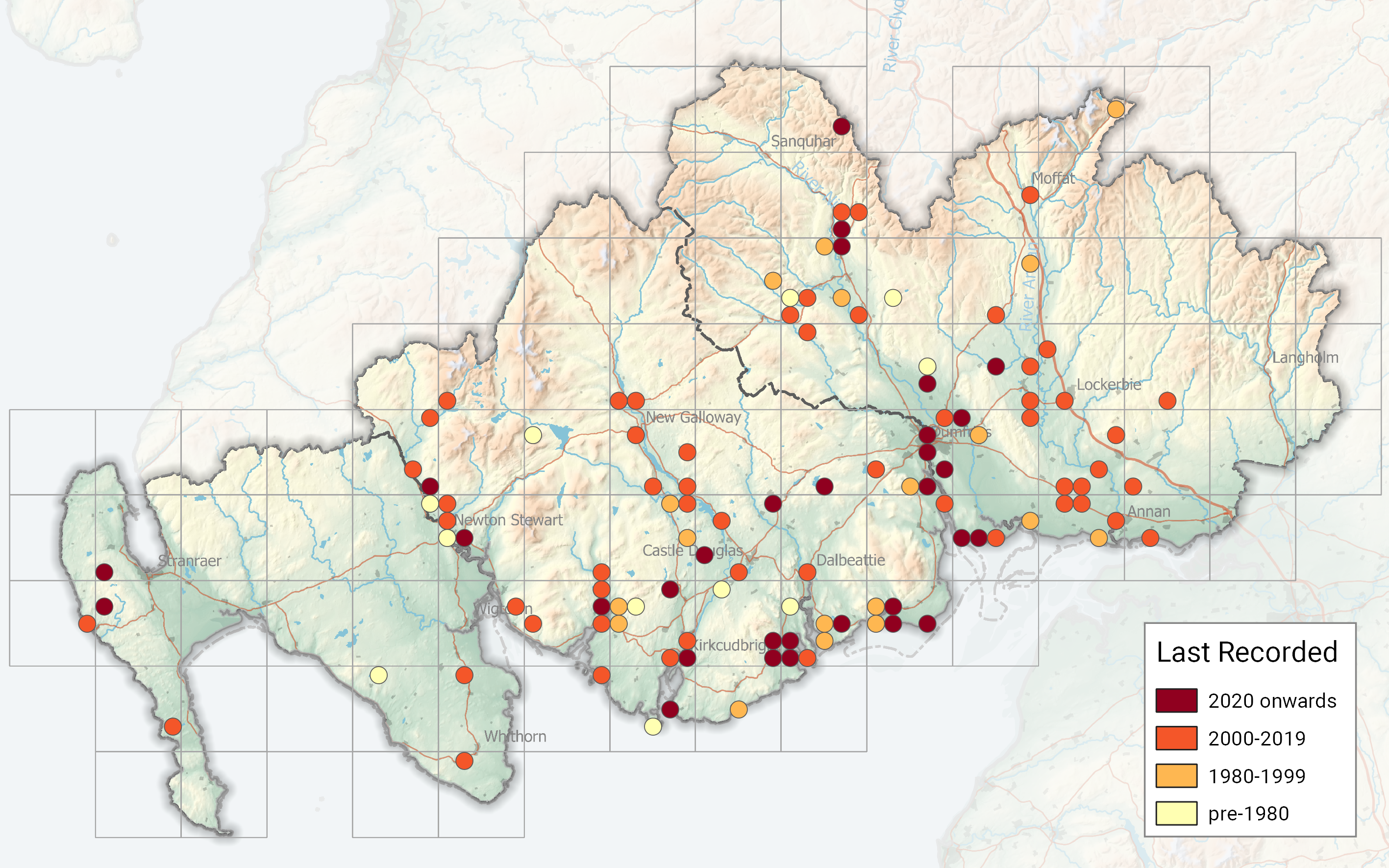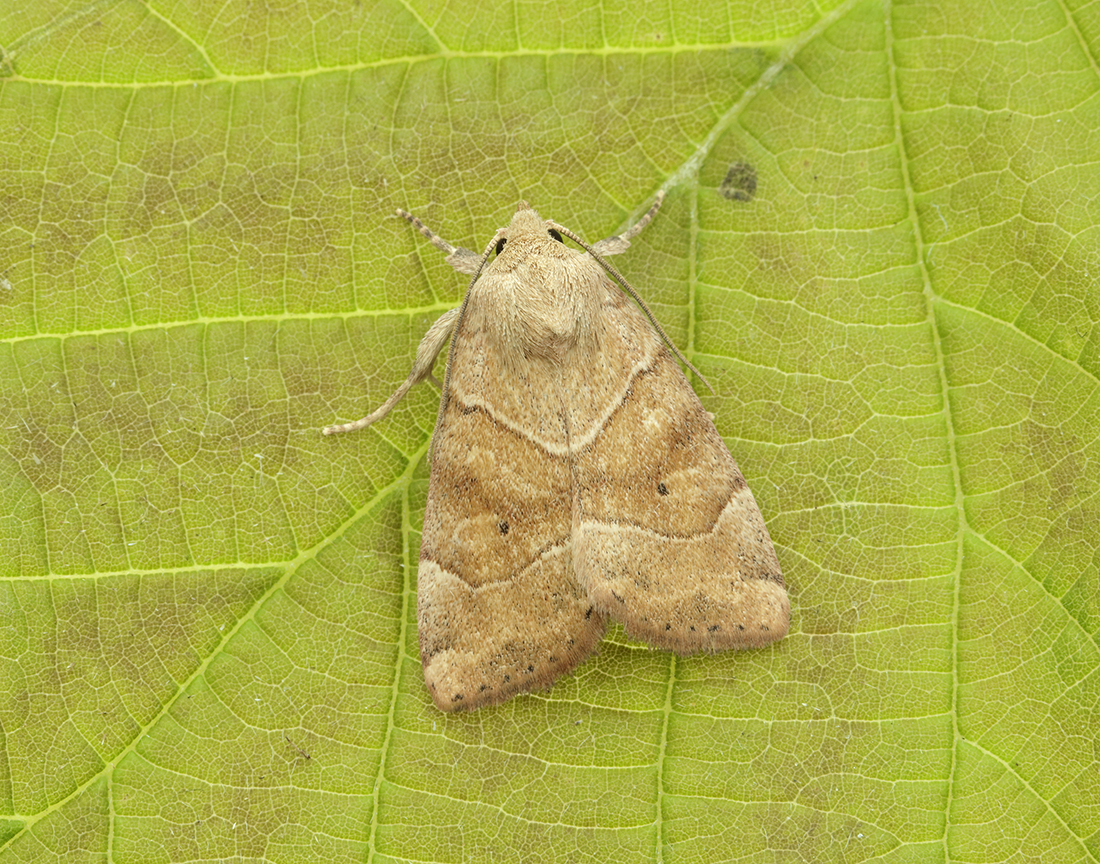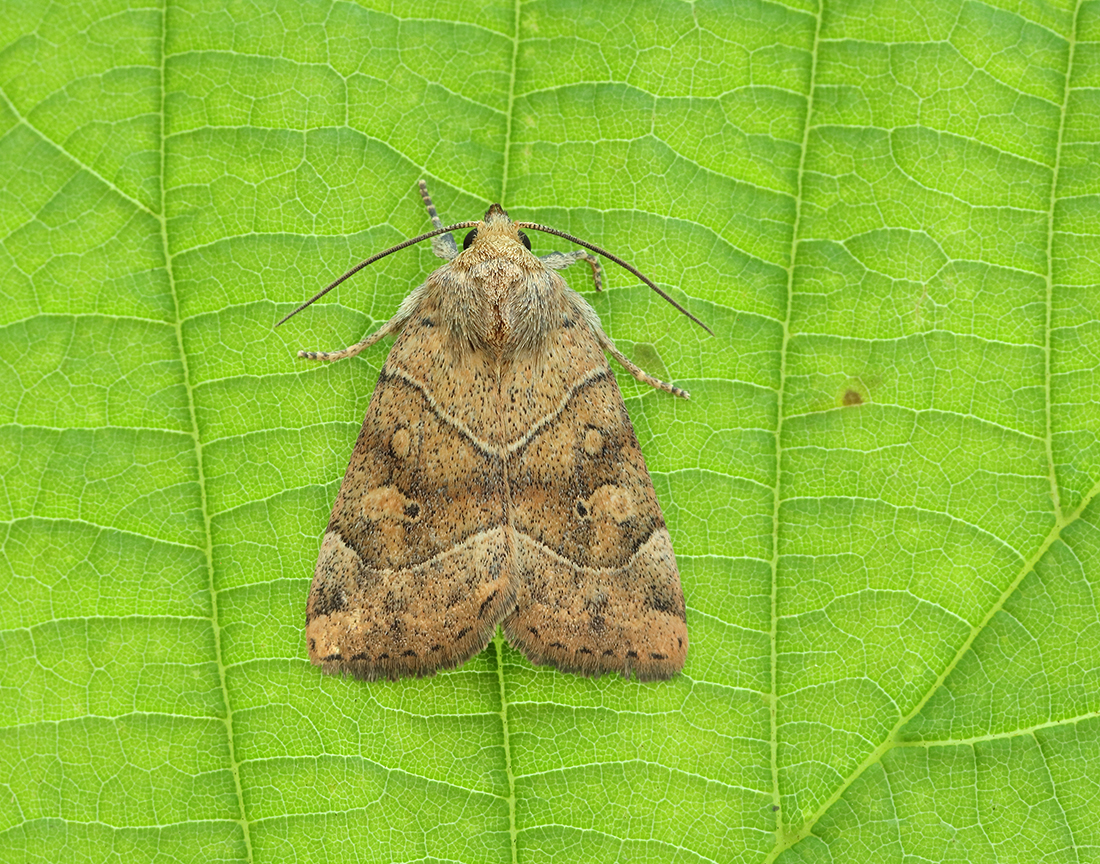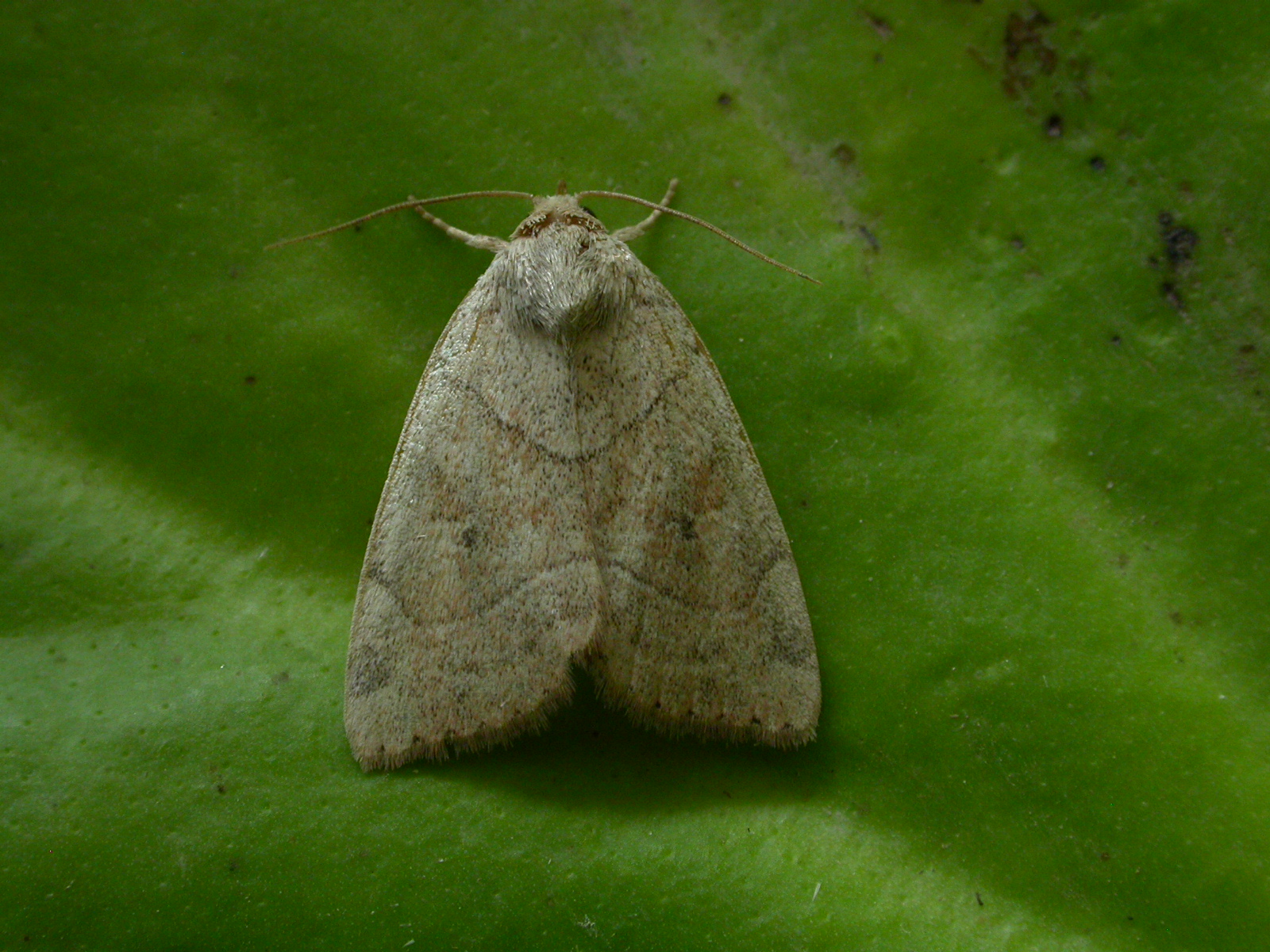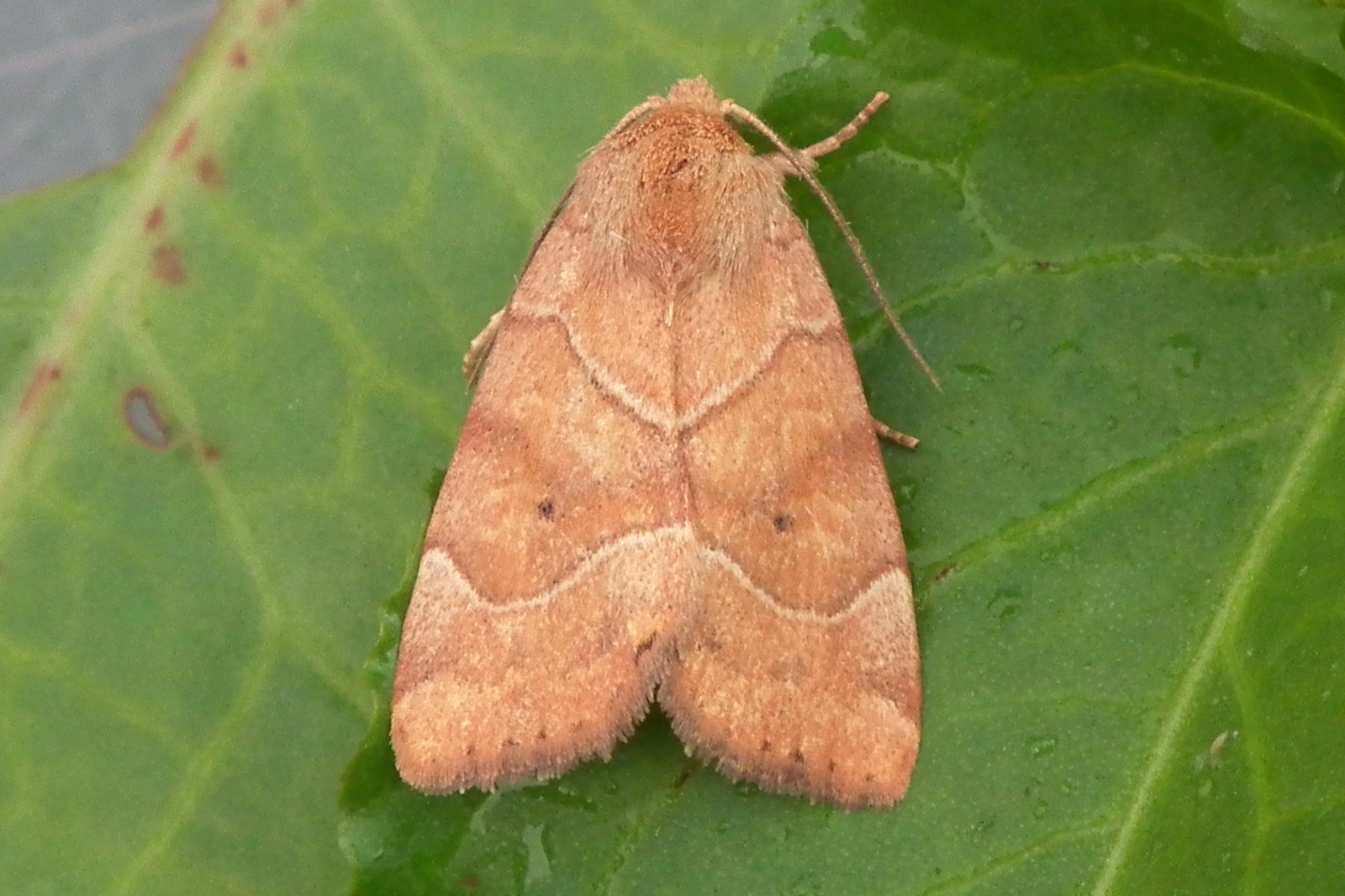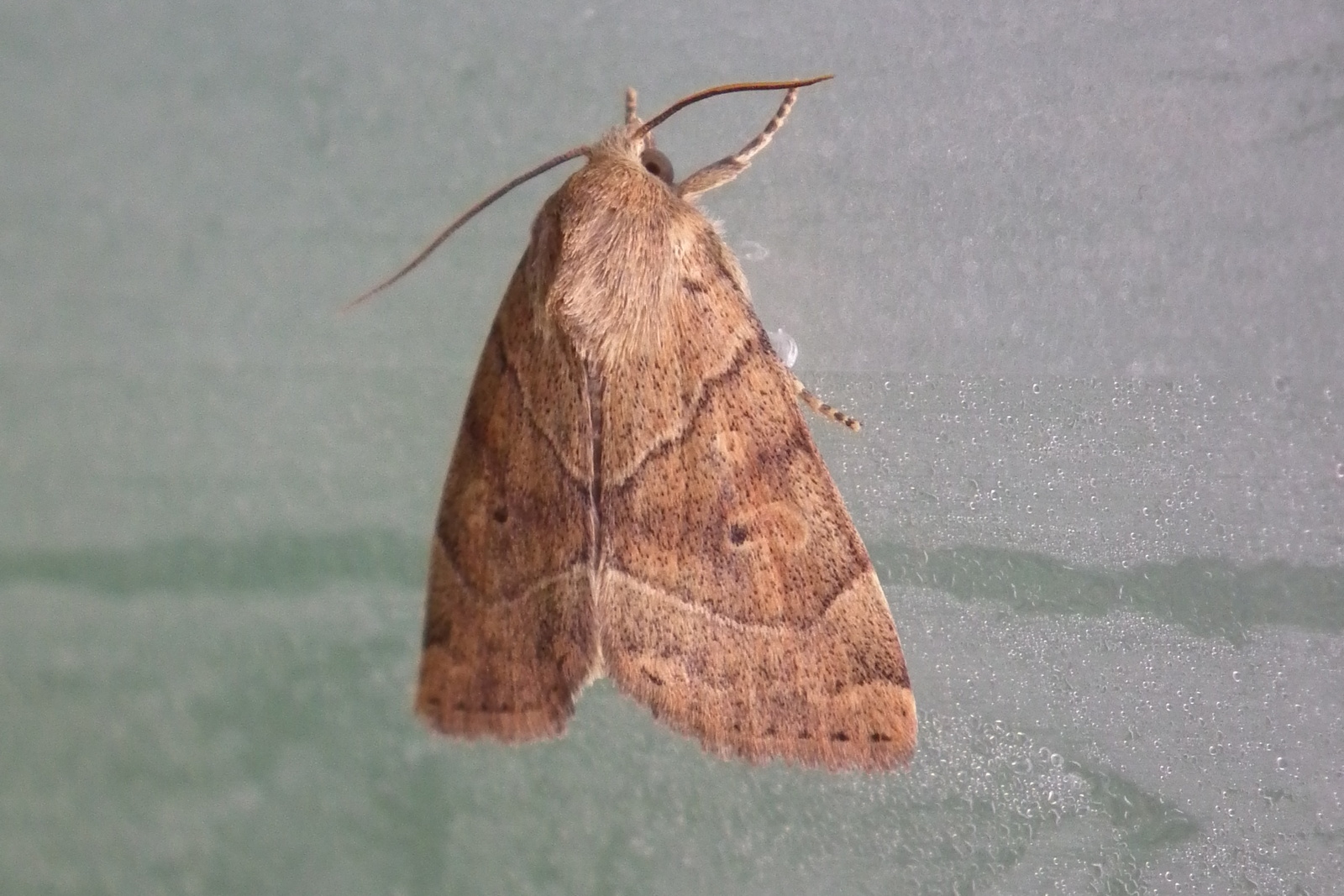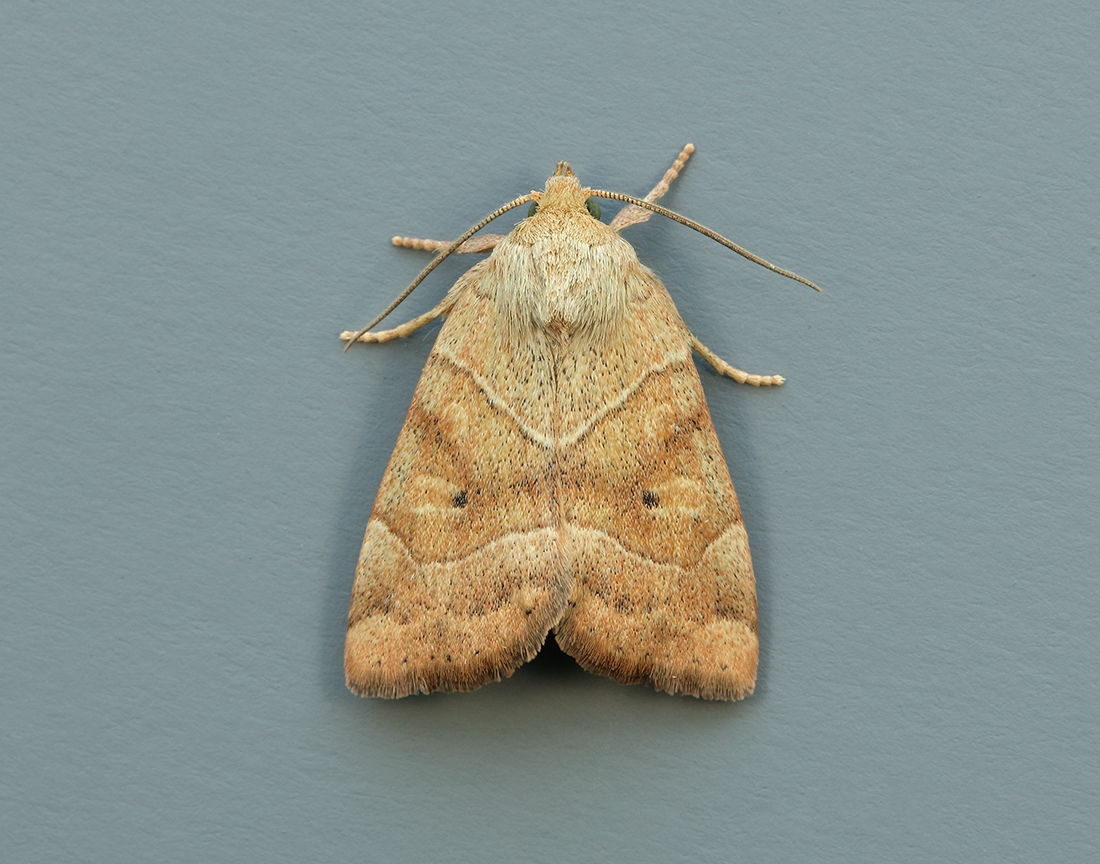Identification
Unmistakable with the basal cross-line forming a V.
Recording Method.
Attracted to light, also comes to sugar and flowers.
Life cycle
One generation. Overwinters as an egg. Larvae are present during April to late June, with pupation taking place in a cocoon close to the ground.
Larval foodplants
Larvae feed on most broadleaved trees and shrubs, with the larger larvae being cannibalistic and feeding on other smaller larvae.
Habitat
Most sites with trees or shrubs, but most abundant in woodland.
History
Somerville (1858) whilst on a visit to the Moffat area had found it was attracted to sugar in August of that year. Gordon (1913) stated that several were taken at sugar in a wood near Loch Elrig, Mochrum (VC74) by J. Garraway. William Evans (1916) received a male from Little Ross Lighthouse sometime during 1915 to aid his insect migration studies.
Sir Arthur Duncan (1909-84) had noted it at Closeburn, Tynron and Dumfries (all VC72) during his lifetime, while Russell (1944) had found it near Gatehouse of Fleet during 1942-43. Pelham-Clinton also recorded it during the early 1960s with records from Palnackie and Rockcliffe (VC73). The only other record in the 60s was from 1969 at Clatteringshaws Loch.
From then on it appeared regularly at all seven of the Rothamsted stations thus greatly adding to our knowledge of the species. There have been many nights with counts of 14, 15, 16, found in a single light trap at the regular trapped sites of Kirkton, Durisdeer, Cally Woods and Mersehead RSPB.

